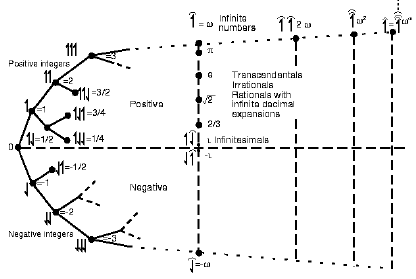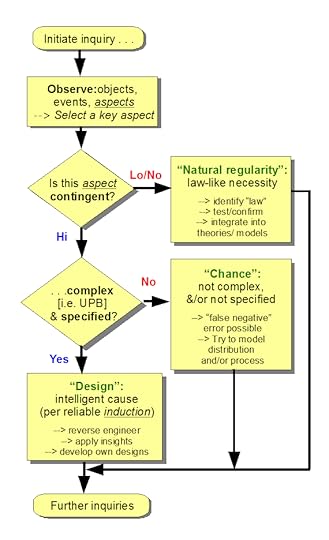Michael J. Behe's Blog, page 557
December 11, 2018
Is it easier than ever to be a mad scientist?
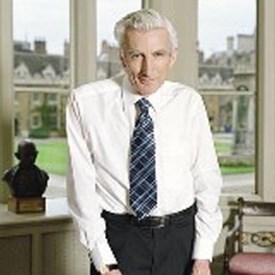
Martin Rees
Maybe He Jiankui, who “who claims to have genetically ‘edited’ two twin baby girls,” is the way of the future?
In conversation with the astronomer Sir Martin Rees for my new podcast series, Confessions, the other day, he spoke of his fear that future science will become increasingly deregulated. And that in the global village of future science, there will inevitably be more ‘village idiots’ who do their own thing. In other words, as some scientific techniques get so much cheaper to reproduce, and as massive computing power is available in our own bedrooms, the threat of rogue science becomes ever-greater.
A few days after the work was made public, He gave a presentation to the Second International Summit on Human Genome Editing in Hong Kong. He received a decidedly chilly reception. The organisers denounced the “unexpected and deeply disturbing” intervention, and called for closer supervision of genetic experimentation. “Even if the modifications are verified, the procedure was irresponsible and failed to conform with international norms,” they said.Giles Fraser, “Here come the rogue scientists” at Unherd
Fraser wonders if He is the first of Rees’s “village idiots.” Well, that guy certainly picked the wrong crowd if his intention was to just inform everyone that he can do as he likes. Word on the street is, He is currently missing. Some mutter about “re-education.”
Fraser’s and Rees’s basic point seems sound: New information, digitization, and affordable advanced machinery have crashed entry costs for many fields, including tinkering with people. So we can expect more of this. That said, we’d be a teensy cautious about making Sir Martin Rees the authoritative source. He tends to be something of an apocalypse hobbyist, inclined more to think in terms of cyborg on Mars than cronyism on the local science ethics board. But then he is an eminent astronomer, after all.
Follow UD News at Twitter!
See also: Citizen’s panel on the ethics of synthetic cell development urged
and
Noted astronomer envisions cyborg on Mars
Copyright © 2018 Uncommon Descent . This Feed is for personal non-commercial use only. If you are not reading this material in your news aggregator, the site you are looking at is guilty of copyright infringement UNLESS EXPLICIT PERMISSION OTHERWISE HAS BEEN GIVEN. Please contact legal@uncommondescent.com so we can take legal action immediately.
Plugin by Taragana
So what’s this about “Little Foot”?
If you read the science news, you’ve probably been hearing about Little Foot alot:
The first of a raft of papers about ‘Little Foot’ suggests that the fossil is a female who showed some of the earliest signs of human-like bipedal walking around 3.67 million years ago. She may also belong to a distinct species that most researchers haven’t previously recognized.Colin Barras, “‘Little Foot’ hominin emerges from stone after millions of years” at Nature
Ninety percent of the skeleton found in South Africa is complete, compared to (possibly) fellow Australopithecus Lucy’s 40%. The papers will be published in a special edition of the Journal of Human Evolution.
An early announcement described Little Foot as an Australopithecus prometheus, but as Barras notes above, that’s disputed.
And we don’t know much more than that:
Like other, younger fossils previously found in Sterkfontein, Little Foot is a human progenitor called an australopithecine. Its species’ name remains uncertain—most researchers think it is likely Australopithecus africanus, a species long known from South Africa, while Clarke prefers to call it Australopithecus prometheus.
Whatever its species, the skeleton is clearly different from Lucy’s species Australopithecus afarensis, which is known only from East Africa. The older date for Little Foot doesn’t necessarily relegate A. afarensis to a lesser role in the human evolutionary story, but it does suggest that story was populated by a diversity of characters deep in time, and spread across Africa. Jamie Shreeve, “‘Little Foot’ Fossil Skeleton Rivals Famous Lucy in Age” at National Geographic
Follow UD News at Twitter!
See also: Cranium of extinct Australopithecus “shows similarities to” our own
Miller: The evidence shows that Lucy is an ape species, not a human ancestor
and
At Science News: Hominid kids were upright walkers 3 million years ago
Copyright © 2018 Uncommon Descent . This Feed is for personal non-commercial use only. If you are not reading this material in your news aggregator, the site you are looking at is guilty of copyright infringement UNLESS EXPLICIT PERMISSION OTHERWISE HAS BEEN GIVEN. Please contact legal@uncommondescent.com so we can take legal action immediately.Plugin by Taragana
A Man is a Woman, Winston
Leftists frequently bash ID proponents and climate change
hysteria skeptics as science “deniers.”
This is ironic, because these same leftists insist that a man can be a
woman by simply wanting to be badly enough.
This would be amusing if they did not often employ the levers of
political power to force compliance with their anti-reality delusions, as a
school board in Virginia recently did when it fired a teacher for refusing to
join in the lie that one of his male students is a female. See here.
We are rapidly arriving at a time when Orwell’s famous “2+2=5
if the party says so” passage is becoming a terrifying reality, except instead instead
of “2+2=5 if the party says so,” it is “a man is a woman if the party says so”:
“Do you remember,” he went on, “writing in your diary, ‘Freedom
is the freedom to say that a man is a man’?”
“Yes,” said Winston.
O’Brien held up a photograph of a young man.
“What gender is this person, Winston?”
“Male.”
“And if the Party says that he is not male but female —
then what gender?”
“Male.”
The word ended in a gasp of pain. The needle of the dial had shot up to
fifty-five. The sweat had sprung out all over Winston’s body. The air tore into
his lungs and issued again in deep groans which even by clenching his teeth he
could not stop. O’Brien watched him, still holding the photograph. He drew back the lever. This time the pain was only slightly eased.
“What gender, Winston?”
“Male.”
The needle went up to sixty.
“What gender, Winston?”
“Male! Male! What else can I say? Male!”
The needle must have risen again, but he did not look at
it. The heavy, stern face and the photograph
filled his vision. The image stood before his eyes, blurry, and seeming to
vibrate, but unmistakably a male figure.
“What gender, Winston?”
“Male! Stop it, stop it! How can you go on? Male! Male!”
“What gender, Winston?”
“Female! Female! Female!”
“No, Winston, that is no use. You are lying. You still think he is male. What gender, please?”
“Male! Female! Male! Anything you like. Only stop it, stop the pain!”
Abruptly he was sitting up with O’Brien’s arm round his shoulders. He had perhaps lost consciousness for a few seconds. The bonds that had held his body down were loosened. He felt very cold, he was shaking uncontrollably, his teeth were chattering, the tears were rolling down his cheeks. For a moment he clung to O’Brien like a baby, curiously comforted by the heavy arm round his shoulders. He had the feeling that O’Brien was his protector, that the pain was something that came from outside, from some other source, and that it was O’Brien who would save him from it.
“You are a slow learner, Winston,” said O’Brien gently.
“How can I help it?” he blubbered. “How can I help seeing
what is in front of my eyes? A man is a man.”
“Sometimes, Winston, sometimes he is a woman. Sometimes he is non-binary or female.
Sometimes he is all of them at once. You
must try harder. It is not easy to become
sane.”
Copyright © 2018 Uncommon Descent . This Feed is for personal non-commercial use only. If you are not reading this material in your news aggregator, the site you are looking at is guilty of copyright infringement UNLESS EXPLICIT PERMISSION OTHERWISE HAS BEEN GIVEN. Please contact legal@uncommondescent.com so we can take legal action immediately.
Plugin by Taragana
How does human language differ from animal signals?
 How is “To be or not to be?” different from Bow wow wow!?
How is “To be or not to be?” different from Bow wow wow!?
Both animals and humans use signs. A sign points to something other than itself. For example, when you point with your finger at a tree, you are making a sign. You want people to look at the tree, not at your finger. A lion’s roar (to scare off an intruder) is also a sign. It’s a warning sign for the intruder, not just noise the animal happens to be making. A bird’s song to attract a mate or establish territory is a sign in the same way. So is a written or spoken word. Both animals and humans use signs.
There are (for our purposes) two kinds of signs—signals and designators. A signal is a concrete sign that has a physical relationship with the object it signifies. Pointing at a tree is a signal (direction). Making a noise to ward off an intruder is a signal (warning). It is the concreteness that characterizes the communication as a signal. A signal points to or represents, in a physical way, what it signifies. That can include aiming (with a gesture) and implying (by a frightening noise). Other signals might include imitation (for example, saying “meow” to a cat, to indicate friendliness by sounding like a cat). Both animals and humans use signals. A paw or hand motion, a grunt, a shout or a roar, are all signals. Signals can be quite complex—consider the complex songs of birds or the dance of insects in a hive.
A designator, however, is a kind of sign that differs in a very important way from a signal. A designator points to an object, but it does so abstractly, not concretely. The spoken or written word “cat” has nothing physically to do with a cat. Unlike a gesture (pointing to a cat) or making the sound “meow”, the letters C-A-T feature nothing that concretely links the word to the animal. You only know what “cat” designates if you understand the word as used in English. By contrast, you could understand a signal like pointing to a cat or saying “meow” even if you spoke no English. Designators differ from signals in that they point to objects—things or concepts—abstractly.
Language is the systematic use of designators—the rule-based use of abstract signs. More. Michael Egnor, “ How is human language different from animal signals?” at Mind Matters
Michael Egnor is a neurosurgeon, professor of Neurological Surgery and Pediatrics and Director of Pediatric Neurosurgery, Neurological Surgery, Stonybrook School of Medicine
See also: Does brain stimulation research challenge free will? If we can be forced to want something, is the will still free? (Michael Egnor)
and
Is free will a dangerous myth? (Michael Egnor)
Copyright © 2018 Uncommon Descent . This Feed is for personal non-commercial use only. If you are not reading this material in your news aggregator, the site you are looking at is guilty of copyright infringement UNLESS EXPLICIT PERMISSION OTHERWISE HAS BEEN GIVEN. Please contact legal@uncommondescent.com so we can take legal action immediately.
Plugin by Taragana
Logic & First Principles, 4: The logic of being, causality and science
We live as beings in a world full of other concrete entities, and to do science we must routinely rely on mathematics and so on numbers and other abstract objects. We observe how — as just one example — a fire demonstrates causality (and see that across time causality has been the subject of hot dispute). We note that across science, there are many “effects.”
Such puts the logic of being and causality on the table for discussion as part 4 of this series [ cf. 1, 2, 3] — and yes, again, the question arises: why are these themes not a routine part of our education?
The logic of being (ontology) speaks to possible vs impossible entities, contingent ones and necessary ones. As was tabulated last time:
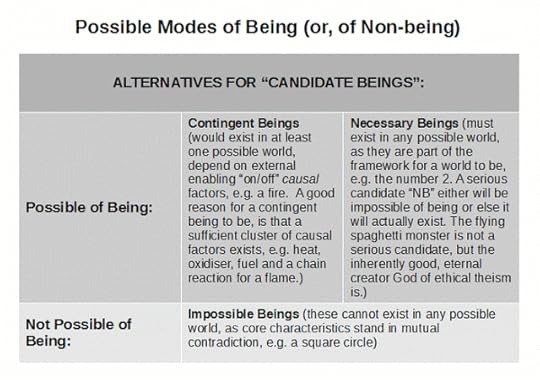 We see here, that some proposed things such as a square circle are not possible of being: there is no possible world in which they would exist as core characteristics [squarishness vs. circularity] stand in mutual contradiction. This already shows LOI and LNC in action, the principle of distinct identity truly is of central importance. Other things are possible of being (some of which are actual). Where, we may contrast that some must exist as part of the framework for any world to exist (e.g. numbers) — necessary beings. Other things may exist in certain possible worlds but would not exist in others, hence: contingent.
We see here, that some proposed things such as a square circle are not possible of being: there is no possible world in which they would exist as core characteristics [squarishness vs. circularity] stand in mutual contradiction. This already shows LOI and LNC in action, the principle of distinct identity truly is of central importance. Other things are possible of being (some of which are actual). Where, we may contrast that some must exist as part of the framework for any world to exist (e.g. numbers) — necessary beings. Other things may exist in certain possible worlds but would not exist in others, hence: contingent.
Contingent, on what? Causes.
But first, just what is a possible world? (Is it another name for the multiverse?)
Let us use a surprisingly helpful introductory discussion at Wikipedia — after all,on the principle of charity we must encourage them towards doing a consistently good job:
For each distinct way the world could have been, there is said to be a distinct possible world; the actual world is the one we in fact live in . . . There is a close relation between propositions and possible worlds. We note that every proposition [–> statement that is true or else false] is either true or false at any given possible world; then the modal status of a proposition is understood in terms of the worlds in which it is true and worlds in which it is false. The following are among the assertions we may now usefully make:
True propositions are those that are true in the actual world (for example: “Richard Nixon became president in 1969”).
False propositions are those that are false in the actual world (for example: “Ronald Reagan became president in 1969”). (Reagan did not run for president until 1976, and thus couldn’t possibly have been elected.)
Possible propositions are those that are true in at least one possible world (for example: “Hubert Humphrey became president in 1969”). (Humphrey did run for president in 1968, and thus could have been elected.) This includes propositions which are necessarily true, in the sense below.
Impossible propositions (or necessarily false propositions) are those that are true in no possible world (for example: “Melissa and Toby are taller than each other at the same time”).
Necessarily true propositions (often simply called necessary propositions) are those that are true in all possible worlds (for example: “2 + 2 = 4”; “all bachelors are unmarried”).[1]
Contingent propositions are those that are true in some possible worlds and false in others (for example: “Richard Nixon became president in 1969” is contingently false and “Hubert Humphrey became president in 1969” is contingently true).The idea of possible worlds is most commonly attributed to Gottfried Leibniz, who spoke of possible worlds as ideas in the mind of God . . . . Scholars have found implicit earlier traces of the idea of possible worlds in the works of René Descartes,[3] a major influence on Leibniz, Al-Ghazali (The Incoherence of the Philosophers), Averroes (The Incoherence of the Incoherence),[4] Fakhr al-Din al-Razi (Matalib al-‘Aliya)[5] and John Duns Scotus.[4] The modern philosophical use of the notion was pioneered by David Lewis and Saul Kripke.
We may summarise, a possible world is a description of the way the — or, a — world might be, inter alia requiring coherence and sufficient completeness for purposes of analysis or action.
For example, in mathematics we routinely construct axiomatic systems that lay out complex abstract model worlds even though, post-Godel we know that no sufficiently complex scheme can be both utterly complete and coherent. Also, that for such schemes we cannot construct an axiomatic system that is demonstrably coherent. (That is, in the end, our confidence in the coherence of our mathematical systems is supported rather than demonstrated; i.e. inductive reasoning is inescapably involved in the practice of mathematics.)
And yes, the utility of Mathematics and its application through computing systems is never far from the surface in our ongoing considerations. Where yes, that means that to some extent we must accept the sufficient reality of a host of abstract, logic-model worlds that we may apply them in our thought and even practical work. Ponder, here, how natural numbers lead to the panoply of transfinite numbers:
We may thus proceed to understand causes and causal factors, first in a fairly narrow sense:
where a contingent entity A would exist in world W1 but would “just” not exist in a closely neighbouring world W2, the difference in circumstances
C(W1 – W2) = f1
allows us to confidently identify f1 as among the relevant causal factors that enable A to be.
Then, we may explore across several neighbouring worlds W2 to Wn, identifying a broader cluster of factors {f1, f2, . . . fn} such that they are each necessary for and are jointly sufficient for A to be.
As an example, ponder the extended fire triangle, the fire tetrahedron:
We are also seeing here the significance of experimental studies, observational studies, use-cases, Monte Carlo modelling and statistical investigations, where in effect we set up micro-worlds and study properties as we vary circumstances or ponder natural variations.
In this context, we are already clarifying cause. Wikipedia is again helpful for convenience, broadening our view:
Causality (also referred to as causation,[1] or cause and effect) is what connects one process (the cause) with another process or state (the effect), where the first is partly responsible for the second, and the second is partly dependent on the first. In general, a process has many causes,[2] which are said to be causal factors for it, and all lie in its past (more precise: none lie in its future). An effect can in turn be a cause of, or causal factor for, many other effects, which all lie in its future. Causality is metaphysically prior to notions of time and space.[3][4]
Causality is an abstraction that indicates how the world progresses, so basic a concept that it is more apt as an explanation of other concepts of progression than as something to be explained by others more basic. The concept is like those of agency and efficacy. For this reason, a leap of intuition may be needed to grasp it.[5] Accordingly, causality is implicit in the logic and structure of ordinary language.[6]. . . .
Causes may sometimes be distinguished into two types: necessary and sufficient.[14] A third type of causation, which requires neither necessity nor sufficiency in and of itself, but which contributes to the effect, is called a “contributory cause.”
Necessary causes
If x is a necessary cause of y, then the presence of y necessarily implies the prior occurrence of x. The presence of x, however, does not imply that y will occur.[15]
Sufficient causes
If x is a sufficient cause of y, then the presence of x necessarily implies the subsequent occurrence of y. However, another cause z may alternatively cause y. Thus the presence of y does not imply the prior occurrence of x.[15]
Contributory causes
For some specific effect, in a singular case, a factor that is a contributory cause is one among several co-occurrent causes. It is implicit that all of them are contributory. For the specific effect, in general, there is no implication that a contributory cause is necessary, though it may be so. In general, a factor that is a contributory cause is not sufficient, because it is by definition accompanied by other causes, which would not count as causes if it were sufficient. For the specific effect, a factor that is on some occasions a contributory cause might on some other occasions be sufficient, but on those other occasions it would not be merely contributory.[16]J. L. Mackie argues that usual talk of “cause” in fact refers to INUS conditions (insufficient but non-redundant parts of a condition which is itself unnecessary but sufficient for the occurrence of the effect).[17] An example is a short circuit as a cause for a house burning down. Consider the collection of events: the short circuit, the proximity of flammable material, and the absence of firefighters. Together these are unnecessary but sufficient to the house’s burning down (since many other collections of events certainly could have led to the house burning down, for example shooting the house with a flamethrower in the presence of oxygen and so forth).
Obviously, a specific contingent circumstance — e.g. the unfortunate burning down of a specific classmate’s house on a particular day in 1976 — had particular distinct causal factors summing up to its specific cause (of interest to the Insurance company) etc. However, once we loosen to a house burning down, we see that we can properly take cause in a looser sense (e.g. of interest to those writing fire safety regulations). This them makes good sense of sufficient but not necessary causal factors as for instance Mackie raised.
Obviously, for an event E, all necessary causal factors (in this looser sense) must be present, as knocking out any one will block it. Likewise, a sufficient cluster must be present which may include broader contributory factors. For example, while a court building here could have caught fire through a short, fire fighters and the police were very interested to observe evidence of accelerants. Not all fires are arson, but some are.
All of this of course feeds onwards into another categorisation of causal factors: mechanical necessity, chance/random factors, intelligently directed contingency. But, that discussion is for another day, save, that we can lay out an explanatory factor flowchart:
The ID Inference Explanatory Filter.
. . . and may ponder competing explanations through abductive inference to best explanation so far:
But, are all entities contingent? No. For, as numbers already indicate, some entities are necessary for any world to exist, as they are inherently part of the framework. To see that, we call on the resources of the principle of distinct identity. Notice, above, we contrasted W1 and W2 etc, drawing out differences even between neighbouring possible worlds. Thus, each world Wk has its own distinct identity and we may freely identify some A such that Wk = (A|~A}. Already we see by partition, twoness. From twoness we infer to one-ness and nullity as emptiness {}. Then, following von Neumann:
{} –> 0
{0} –> 1
{0,1} –> 2
. . .
[Thence, the onward panoply of the transfinites.]
Etc.
Numbers, thus the logic of structure and quantity — the substance of Mathematics, is inherent to the framework of any possible world. This already implies reality in some sense of abstract being. And it further seems that the abstract model worlds of core Mathematics can be sub-worlds integrated with physical ones. Peculiar indeed.
Numbers, we have seen, are necessary beings.
Such NB’s (as opposed to contingent ones, CB’s) have peculiar properties. For one, no Wk is possible in which NB’s do not exist. Try to ponder a world where 2-ness does not exist, or begins to exist or ceases from being. Impossible. Thus, we see a constraint that highlights worlds that are impossible of being. And, a serious candidate NB will therefore be either impossible of being (square circle logic) or it will be present in any actualised Wk. One implication is, that a world is — manifestly so, implies that all truly necessary beings eternally are.
Where of course, the God of Ethical Theism is a serious candidate necessary being. He is either impossible of being or actual. And yes those who claim to know or to practically know he does not exist in actuality have taken up a huge burden of proof. One, I daresay, has never been met. (If you doubt, just fill in one of those pesky UD blanks: ______ Where, for example, post Plantinga, the problem of evil is effectively dead.)
All of this points onward to a further thorny issue: intelligibility (at least to God! and partly, to us!) of the world.
That is, some form or other of the principle of sufficient reason. I here put up a weak form sufficient to pursue logic of being:
[PSR, weak (investigatory) form:] Of any particular thing A that is
[. . . or (ii) is possible, or even (iii) is impossible],
we may ask, why it is
[. . . or (ii’) why it is possible, or (iii’) why it is impossible],
and we may expect — or at least hope — to find a reasonable answer.
Of course, for any given case, X, we may simply directly proceed to ask why is X so, or why is X possible or why is X impossible, and seek a reasonable answer. So, the weak form as it stands is unobjectionable. It is also central to science and to the project of being rational, responsible creatures.
Linked, we may ponder a claim some have advanced, that our world is just one stage in an ongoing infinite in the past and potentially infinite in the future, chain of successive, causally-temporally linked stages, back to the singularity and beyond without limit:
. . . s-n, s- (n-1), . . . s-2, s-1, NOW, s+1, s+2 . . .
This has been repeatedly debated here at UD, and I continue to hold that the proposed past infinity is incoherent as it has no basis to arrive at now in finite successive stages. Others have claimed differently. I doubt such claims as actual stepwise succession in finite steps cannot ever span a transfinite range.
So, we here see causality and intelligibility of being as key first principles of rationality. END
Copyright © 2018 Uncommon Descent . This Feed is for personal non-commercial use only. If you are not reading this material in your news aggregator, the site you are looking at is guilty of copyright infringement UNLESS EXPLICIT PERMISSION OTHERWISE HAS BEEN GIVEN. Please contact legal@uncommondescent.com so we can take legal action immediately.
Plugin by Taragana
December 10, 2018
Our solar system is a lot rarer than it was a quarter century ago
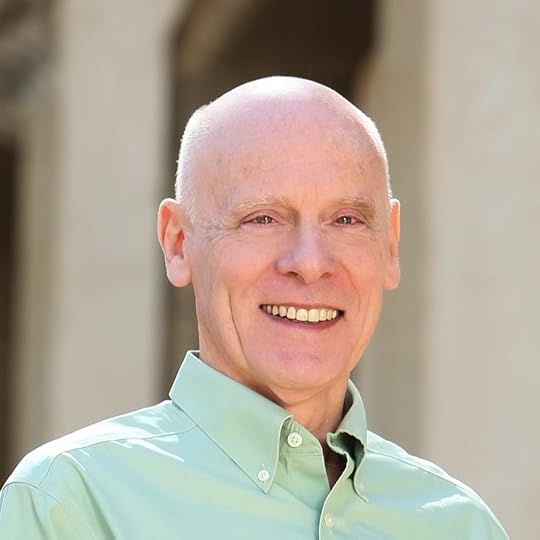
Hugh Ross
Two independent teams of astronomers recently looked into the matter:
Astronomers have detected and measured the mass and/or orbital features of 3,869 planets in 2,887 planetary systems beyond the solar system. This ranks as a staggering rate of discovery, given that the first confirmed detection of a planet orbiting another hydrogen-fusion-burning star was as recent as 1995. What do the characteristics of these systems reveal about potential habitability for advanced life?
…
The presumption back in 1995 was that astronomers would find many exoplanetary systems where the probability of advanced life possibly existing in that system would be greater than zero. More than twenty-three years later, with a database of 2,888 planetary systems and 3,877 planets, only one planetary system and only one planet possess the characteristics that the possible existence of advanced life needs. It requires little effort to discern the identity of that single planetary system and single planet.Hugh Ross, “Rare Solar System Gets Rarer” at Reasons
Hat tip: Philip Cunningham
Follow UD News at Twitter!
See also: We look for planets differently now It turns out that other solar systems are not shedding much light on how ours came to be Researcher: “We see all kinds of structure in these disks, even at very young ages,” says Follette. “Even younger than we classically thought planets should form.”
and
What becomes of science when the evidence does not matter?
Copyright © 2018 Uncommon Descent . This Feed is for personal non-commercial use only. If you are not reading this material in your news aggregator, the site you are looking at is guilty of copyright infringement UNLESS EXPLICIT PERMISSION OTHERWISE HAS BEEN GIVEN. Please contact legal@uncommondescent.com so we can take legal action immediately.
Plugin by Taragana
Do female rats depend in part on their uterus for memory?
That’s the surprising conclusion of a recent study that required rats who had had their ovaries or their uterus removed or both and then had to negotiate a water maze six weeks later:
As compared with the other rats, animals who had only their uterus removed struggled more as the test became increasingly difficult. The scientists also observed differences in the hormone levels of these rats. Overall, the study suggests that signals from the uterus—and not the ovaries, which are better known for their hormone production—influence brain function. Carolyn Wilke, “Rat Study Points to Role of Uterus in Memory” at The Scientist
Memory may be more complex than we think.
Follow UD News at Twitter!
See also: Food, sex, and memory in one-celled algae, once again
Neuroscience: RNA can transfer memory in sea slugs
and
Epigenetics: Fertilized egg deletes sperm’s epigenetic memory
Copyright © 2018 Uncommon Descent . This Feed is for personal non-commercial use only. If you are not reading this material in your news aggregator, the site you are looking at is guilty of copyright infringement UNLESS EXPLICIT PERMISSION OTHERWISE HAS BEEN GIVEN. Please contact legal@uncommondescent.com so we can take legal action immediately.
Plugin by Taragana
At Oscillations: How we go from a sphere to a torus
At her blog, Oscillations, Suzan Mazur reports on the lecture series Simons Center for Geometry and Physics has been hosting at Stony Brook University, on Nonequilibrium Physics in Biology:
Among the more interesting presenters is Kim Sneppen, a professor of complex systems and biophysics at Neils Bohr Institute in Copenhagen, who addresses the diversity of shapes in the biological world.
Sneppen says, “We are basically all doughnuts” and describes how we go from a sphere to a torus in his talk titled: “Theoretical Tool Bridging Cell Polarities with Development of Morphologies.” Suzan Mazur, “Kim Sneppen, Simons Center Talk: “We are basically all doughnuts”” at Oscillations
Mazur discusses his approach to embryology and along the way mentions Stuart Pivar, an early exponent of the “torus” or doughnut approach to embryological development, as set out in his 2009 book, Origin of Form: Evolution by Self-Organization (2009). He himself was much ridiculed, particularly because, as a friend of Stephen Jay Gould, who died in 2002, he felt that Gould was much friendlier to self-organization concepts than he was made out to be.
The Simons Center videos are here.
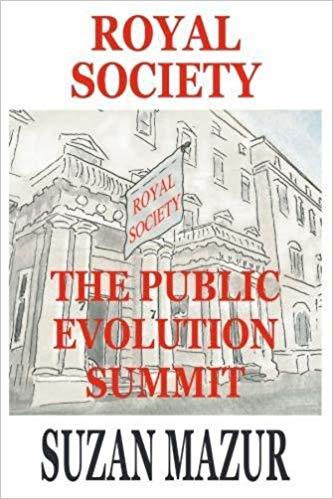 Mazur is the author of Royal Society: The Public Evolution Summit which deals with the November 2016 meeting in detail.
Mazur is the author of Royal Society: The Public Evolution Summit which deals with the November 2016 meeting in detail.
See also: Citizen’s panel on the development of the synthetic cell urged
“1st International Symposium on Building a Synthetic Cell,” Netherlands, August 28–29
and
Suzan Mazur on mechanobiology, the next level of understanding of the cell
Copyright © 2018 Uncommon Descent . This Feed is for personal non-commercial use only. If you are not reading this material in your news aggregator, the site you are looking at is guilty of copyright infringement UNLESS EXPLICIT PERMISSION OTHERWISE HAS BEEN GIVEN. Please contact legal@uncommondescent.com so we can take legal action immediately.
Plugin by Taragana
A gene that sets primates (apes and humans) apart from other mammals

Brain organoids/Adam O’Neill
From ScienceDaily:
University of Otago researchers have discovered information about a gene that sets primates — great apes and humans — apart from other mammals, through the study of a rare developmental brain disorder.
…
Dr O’Neill and research collaborators from Max Planck Institute of Psychiatry, Germany, then set forth to test the point that the gene drives aspects of brain development that are unique to primates. Some amazing data was found using a novel approach through studying human “mini-brains” in culture. It is now possible to take a skin cell and transform it using a set of genetic tricks, so that it can be triggered to form a tiny brain-like structure in culture in the lab.
Their results showed that the particular genetic change that disabled a component of this gene (PLEKHG6) altered its ability to support the growth and proliferation of specialised stem cells in the developing brain. In addition, some of these cells also failed to migrate to their correct position in the growing “mini-brain” during the first few weeks of brain development.
Professor Robertson says it has been known for a while that these stem cells behave differently between primates/humans and other animals, but understanding what genes regulate these differences has been a mystery.
“Adam’s achievement has been to show that this particular component of the PLEKHG6 gene is one such regulator that humans have ‘acquired’ very recently in their evolution to make their brains ‘exceptional’.”
Dr O’Neill says there are very few genetic elements that are primate specific in our genome, so this discovery adds to a very short list of genetic factors that, at least in one sense, make us human. – Material provided by the University of Otago More.
Here’s the paper. (open access) Summary:
The mammalian neocortex has undergone remarkable changes through evolution. A consequence of
such rapid evolutionary events could be a trade-off that has rendered the brain susceptible to certain neurodevelopmental and neuropsychiatric conditions. We analyzed the exomes of 65 patients with the structural brain malformation periventricular nodular heterotopia (PH). De novo coding variants were observed in excess in genes defining a transcriptomic signature of basal radial glia, a cell type linked to brain evolution. In addition, we located two variants in human isoforms of two genes that have no ortholog in mice. Modulating the levels of one of these isoforms for the gene PLEKHG6 demonstrated its role in regulating neuroprogenitor differentiation and neuronal migration via RhoA, with phenotypic recapitulation of PH in human cerebral organoids. This suggests that this PLEKHG6 isoform is an example of a primate-specific genomic element supporting brain development.
Follow UD News at Twitter!
See also: Researchers: Primates vary in speech capability. (But none speak.)
and
Study: Humans are the only primates that show kindness?
Copyright © 2018 Uncommon Descent . This Feed is for personal non-commercial use only. If you are not reading this material in your news aggregator, the site you are looking at is guilty of copyright infringement UNLESS EXPLICIT PERMISSION OTHERWISE HAS BEEN GIVEN. Please contact legal@uncommondescent.com so we can take legal action immediately.
Plugin by Taragana
We look for planets differently now
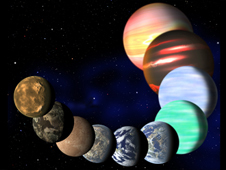
types of planets Kepler found/NAA
It turns out that other solar systems are not shedding much light on how ours came to be:
But as the menagerie of young planetary systems grows, researchers are struggling to square their observations with current theories on how our Solar System and others formed. Such ideas have been in turmoil ever since astronomers started discovering planets around distant stars — a list that now numbers in the thousands. The Solar System has rocky planets near the Sun and giant gas balls farther out, but the panoply of exoplanets obeys no tidy patterns. And the rule book for world-building is getting more complicated as researchers find evidence of planets in the process of being born. Still, astronomers hope that witnessing such birth pangs will shed light on how all planetary systems, including our own, came to be. “We see all kinds of structure in these disks, even at very young ages,” says Follette. “Even younger than we classically thought planets should form.” Rebecca Boyle, “These dusty young stars are changing the rules of planet-building” at Nature
But that is information too. And if it;ds not what we expected, we probably aren’t just imagining it.
Follow UD News at Twitter!
See also: Astronomers: First possible exomoon is the size of Neptune, and orbiting a “Jupiter”
and
ET life: We should look for planets like Earth’s past, not its present
Copyright © 2018 Uncommon Descent . This Feed is for personal non-commercial use only. If you are not reading this material in your news aggregator, the site you are looking at is guilty of copyright infringement UNLESS EXPLICIT PERMISSION OTHERWISE HAS BEEN GIVEN. Please contact legal@uncommondescent.com so we can take legal action immediately.
Plugin by Taragana
Michael J. Behe's Blog
- Michael J. Behe's profile
- 219 followers


